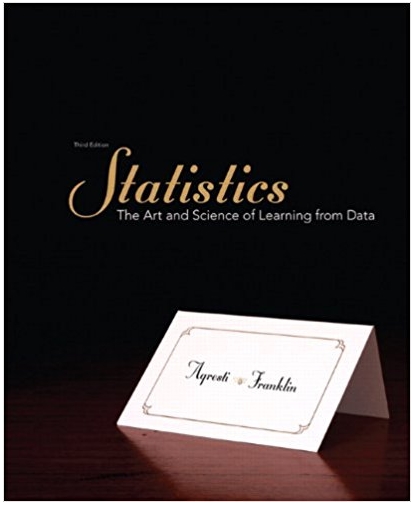The FL Crime data file on the text CD has data for the 67 counties in Florida
Question:
-1.png)
Scatterplot matrix for crime rate, education, and urbanization.
Multiple regression for y = crime rate, x1= education, and x2= urbanization.
-2.png)
a. Find the predicted crime rate for a county that has 0% in an urban environment and (i) 70% high school graduation rate and (ii) 80% high school graduation rate.
b. Use results from part a to explain how education affects the crime rate, controlling for urbanization, interpreting the slope coefficient -0.58 of education.
c. Using the prediction equation, show that the equation relating crime rate and education when urbanization is fixed at (i) 0, (ii) 50, and (iii) 100, is as follows:
-3.png)
Sketch a plot with these lines and use it to interpret the effect of education on crime rate, controlling for urbanization.
d. The scatterplot matrix shows that education has a positive association with crime rate, but the multiple regression equation shows that the association is negative when we keep x2 = urbanization fixed. The reversal in the association is an example of Simpson€™s paradox (See Example 16 in Sec. 3.4 and Example 17 in Sec. 10.5). Consider the hypothetical figure that follows. Sketch lines that represent (i) the bivariate relationship, ignoring the information on urbanization and (ii) the relationship for counties having urbanization = 50. Use this figure and the correlations provided to explain how Simpson€™s paradox can happen.
-4.png)
Hypothetical scatterplot for crime rate and education, labeling by urbanization.
Step by Step Answer:

Statistics The Art And Science Of Learning From Data
ISBN: 9780321755940
3rd Edition
Authors: Alan Agresti, Christine A. Franklin





